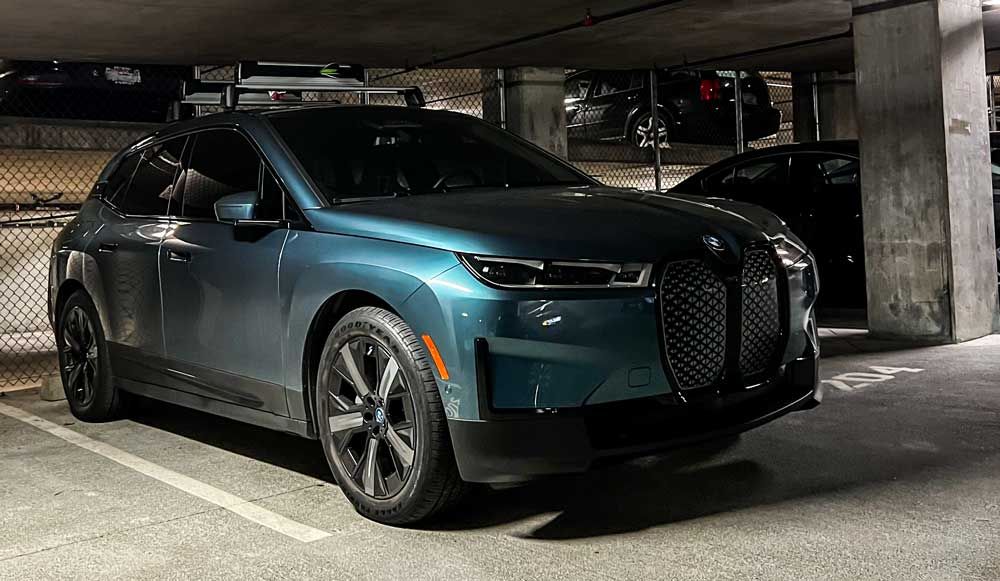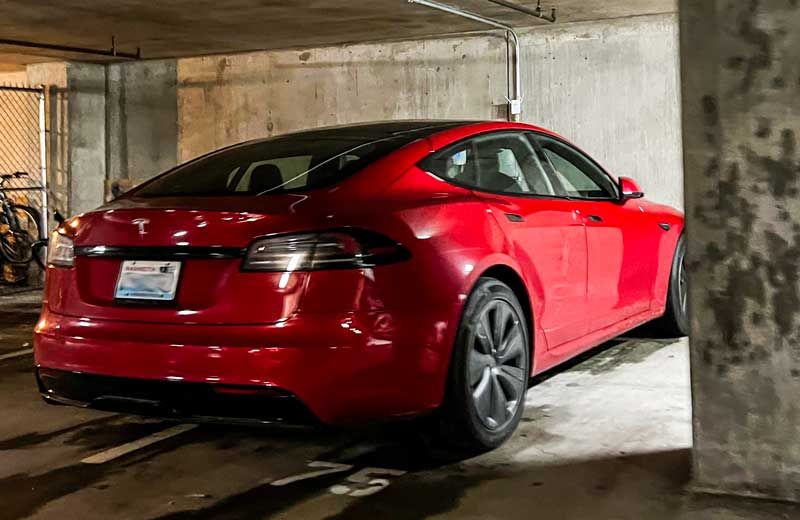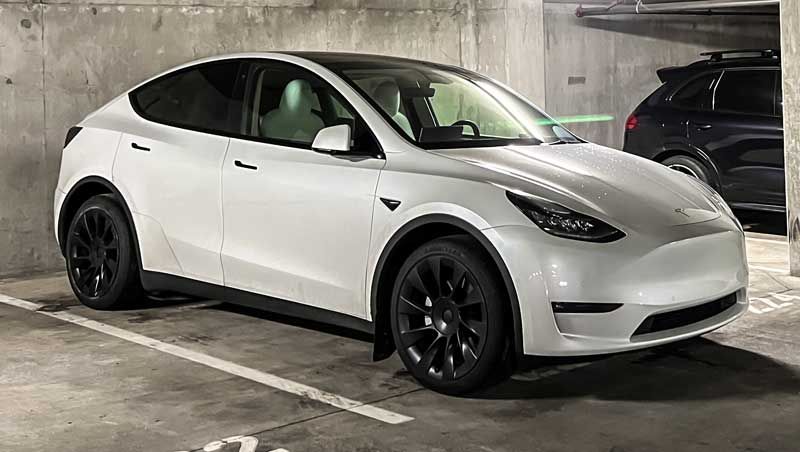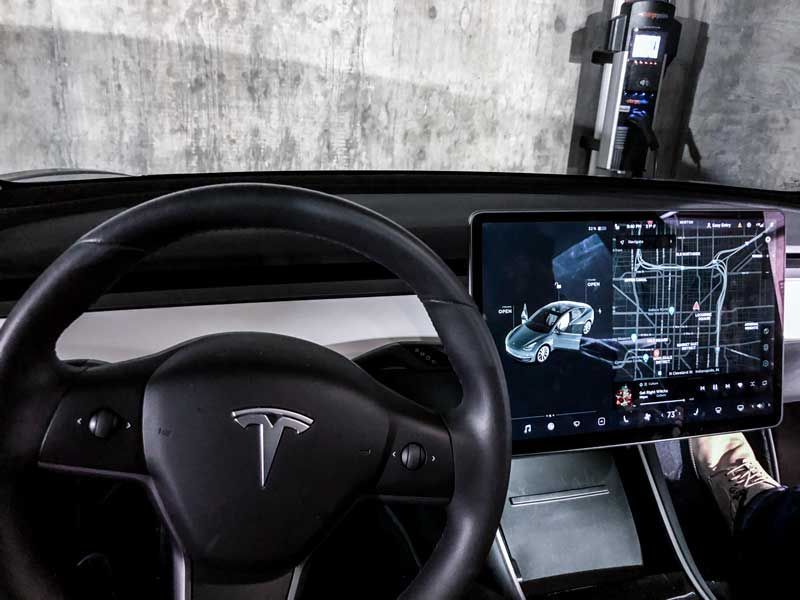Electric Vehicles in 2024: Things That You Should Know

Some of the links on this page may link to our affiliates. Learn more about our affiliate policies.
Last Updated: December 17, 2023
Electric vehicles (EVs) have experienced a meteoric rise in popularity over the past few years, becoming an increasingly common sight on roads worldwide. As concerns about climate change and air pollution grow, EVs offer a more sustainable and environmentally friendly transportation option than their gasoline-powered counterparts. With lower emissions, cost savings on fuel and maintenance, and ongoing technological advancements, EVs are transforming the automotive landscape and changing how we think about personal transportation.
Types of Electric Vehicles
There are three main types of electric vehicles currently available on the market: Battery Electric Vehicles (BEVs), Plug-in Hybrid Electric Vehicles (PHEVs), and Fuel Cell Electric Vehicles (FCEVs). Each EV type offers unique benefits and drawbacks, depending on individual needs and preferences.
Battery Electric Vehicles (BEVs)
Battery Electric Vehicles, or BEVs, are fully electric vehicles that rely solely on a battery pack to power the electric motor. They do not have an internal combustion engine, which means they produce zero tailpipe emissions. Some of the most popular BEVs on the market today include the Tesla Model 3, Nissan Leaf, and Chevrolet Bolt.
Pros of BEVs
- Zero tailpipe emissions: BEVs are the most environmentally friendly option among EVs since they do not emit harmful pollutants.
- Low operating costs: BEVs have fewer moving parts than traditional internal combustion engine (ICE) vehicles, which translates to lower maintenance costs. Additionally, electricity is generally cheaper than gasoline, significantly saving fuel costs.
- Smooth and quiet performance: Electric motors deliver instant torque, providing quick acceleration and smooth performance. Furthermore, BEVs are generally quieter than ICE vehicles, leading to a more comfortable driving experience.
Cons of BEVs
- Limited range: While BEVs have improved significantly over the years, they still tend to have a lower range than ICE vehicles and PHEVs. This may concern drivers frequently taking long trips or needing more access to charging infrastructure.
- Charging time: Charging a BEV can take longer than refueling a gasoline-powered car, especially if using a standard Level 1 or Level 2 charger at home. However, this drawback is becoming less significant with the expansion of fast-charging networks.
Plug-in Hybrid Electric Vehicles (PHEVs)
Plug-in Hybrid Electric Vehicles, or PHEVs, combine electric and gasoline-powered vehicles. They feature an electric motor, battery pack, and an internal combustion engine. PHEVs can be driven using electric power alone for a limited range, after which the gasoline engine provides an additional driving range.
Pros of PHEVs
- Flexibility: PHEVs offer the best of both worlds, allowing drivers to benefit from the advantages of electric driving without worrying about range anxiety. When the battery is depleted, the gasoline engine ensures the vehicle can still be driven like a traditional ICE car.
- Reduced emissions: Although PHEVs still produce some emissions when the gasoline engine is in use, they emit significantly fewer pollutants than conventional vehicles, especially when driven in electric-only mode.
- Potential cost savings: PHEV drivers can save on fuel costs when using electric power while still having the flexibility of a gasoline engine for longer trips.
Cons of PHEVs
- Limited electric range: PHEVs typically have a shorter electric-only range compared to BEVs, which means that drivers who primarily rely on electric
The Latest EV Models and Innovations
In 2023, numerous electric vehicle models have captured consumers' attention, offering impressive specs, innovative features, and competitive pricing. Here are five popular EV models that showcase the latest advancements in the automotive industry:
Tesla Model 3
- Specs: Up to 358 miles of range, 0-60 mph in as little as 3.1 seconds, and seating for five.
- Features: Autopilot, over-the-air software updates, and a minimalist interior with a large central touchscreen display.
- Pricing: Starts at around $39,990.
Ford Mustang Mach-E
- Specs: Up to 305 miles of range, 0-60 mph in as little as 3.5 seconds, and seating for five.
- Features: Ford's SYNC 4A infotainment system, hands-free driving with Ford BlueCruise, and a spacious cargo area.
- Pricing: Starts at around $42,895.
Volkswagen ID.4
- Specs: Up to 260 miles of range, 0-60 mph in 7.4 seconds, and seating for five.
- Features: ID.Light interactive lighting system, a sleek and modern interior, and a range of driver assistance systems.
- Pricing: Starts at around $39,995.
Rivian R1T
- Specs: Up to 314 miles of range, 0-60 mph in as little as 3 seconds, and seating for five.
- Features: A versatile and rugged electric pickup truck with off-road capabilities, ample storage, and a unique "gear tunnel" for additional cargo space.
- Pricing: Starts at around $67,500.
Hyundai Ioniq 5
- Specs: Up to 303 miles of range, 0-60 mph in as little as 5.2 seconds, and seating for five.
- Features: A spacious and futuristic interior, Vehicle-to-Load (V2L) technology for powering devices, and an eco-friendly solar roof option.
- Pricing: Starts at around $39,700.
Noteworthy technological advancements in the EV market include improved battery technology, which has led to increased range and reduced charging times. Solid-state batteries, for example, hold the potential to revolutionize the industry with their higher energy density and faster charging capabilities. Companies like Toyota and QuantumScape are working diligently to bring this technology to market.
Charging infrastructure has also seen significant improvements, with the expansion of fast-charging networks like Tesla's Supercharger and Electrify America. These networks enable EV drivers to quickly recharge their vehicles during long trips, easing concerns about range anxiety.
Autonomous driving capabilities have become an increasingly important feature in EVs. Tesla's Autopilot, Ford's BlueCruise, and GM's Super Cruise are examples of advanced driver-assistance systems that use cameras, sensors, and artificial intelligence to enable semi-autonomous driving on highways.
These latest EV models and innovations demonstrate the rapid progress of electric vehicles and serve as a testament to their growing popularity and potential to reshape the future of transportation.
Buying an Electric Vehicle
Things to Consider
Purchasing an electric vehicle is exciting, but several factors must be considered before taking the plunge. Here are some key aspects to keep in mind when evaluating your options:
- Range: The driving range of an EV is a crucial factor for many buyers. Consider how far you typically drive in a day and whether the vehicle's range will meet your needs. Remember that range can be affected by factors like temperature, driving style, and terrain.
- Charging options: Evaluate your access to charging infrastructure at home and on the road. If you have a garage or driveway, you can likely install a Level 2 charger for faster home charging. Also, research the availability of public charging stations along your regular routes and for long-distance travel.
- Incentives: Look into federal, state, and local incentives that may be available for EV purchases. These can include tax credits, rebates, or even reduced registration fees, which can significantly lower the overall cost of the vehicle.
- Vehicle type: Consider the type of EV that best suits your needs. A plug-in hybrid (PHEV) may be a better option if you're concerned about range anxiety. On the other hand, if you're committed to reducing emissions and can accommodate charging, a battery electric vehicle (BEV) might be more suitable.
- Performance and features: Compare the performance, features, and technology of different EV models to find one that aligns with your preferences and budget.
Pros and Cons of Buying a New EV Vehicle
When deciding whether to buy a new or used EV, there are pros and cons to consider:
Pros of Buying New
- Latest technology: New EVs will likely have the most up-to-date features, a longer range, and improved performance.
- Full warranty: New vehicles come with a manufacturer's warranty, providing peace of mind and protection from unforeseen issues.
- Eligibility for incentives: Some government incentives may only apply to new EVs, which can help offset the higher purchase price.
Cons of Buying New
- Higher cost: New EVs are generally more expensive than used models, which can be a significant consideration for buyers on a budget.
Pros and Cons of Buying a New EV Vehicle
Pros of Buying New
- Lower cost: Used EVs can be more affordable, making them a more accessible option for buyers with a limited budget.
- Slower depreciation: EVs, like all vehicles, depreciate over time. Purchasing a used model avoids the steepest depreciation curve during the first few years of ownership.
Cons of Buying New
- Limited warranty: Used vehicles may have a shorter or no warranty remaining, which could result in higher repair costs if issues arise.
- Older technology: Used EVs may have a shorter range than the latest models.
Financing options for EVs include traditional auto loans, leases, and government incentives:
- Loans: Many financial institutions offer loans tailored to EV purchases, with competitive interest rates and flexible terms.
- Leases: Leasing an EV can provide a lower monthly payment and the option to upgrade to a newer model at the end of the lease term. However, remember that you won't own the vehicle at the end of the lease.
- Government incentives: Look into federal, state, and local incentives for EV purchases, as these can help reduce the overall cost of the vehicle. In the United States, for example, a federal tax credit of up to $7,500 may be available for eligible EVs.
By carefully considering these factors and weighing the pros and cons of new vs. used EVs, you can make an informed decision that best meets your needs and budget.
Owning and Maintaining an EV

Owning an electric vehicle comes with unique considerations, including the cost of ownership, maintenance, and long-term reliability. This section will discuss these aspects and address misconceptions or concerns about EV ownership.
Cost of Ownership:
Charging costs: The cost of charging an EV is generally lower than fuel for a traditional internal combustion engine (ICE) vehicle. Charging costs vary depending on your electricity rate, charging location (home, work, or public), and the efficiency of your EV. Using off-peak electricity or solar panels for home charging, you can reduce charging costs.
Maintenance: EVs typically have lower maintenance costs than ICE vehicles due to fewer moving parts and no need for oil changes, tune-ups, or exhaust system maintenance. However, some maintenance items, such as brake fluid replacement, tire rotations, and cabin air filter replacements, remain to consider.
Depreciation: As with all vehicles, EVs experience depreciation over time. However, the depreciation curve for EVs can be steeper due to technological advancements, battery degradation, and the availability of incentives for new EVs. To minimize the impact of depreciation, consider purchasing a used EV or opting for a lease.
Maintenance Tips and Long-term Reliability:
Regularly inspect and maintain your tires: Ensure your tires are properly inflated, rotated, and replaced when necessary. This not only improves your EV's efficiency but also extends the life of your tires.
Keep your battery healthy: To prolong your EV's battery life, avoid frequent fast charging and keep the state of charge between 20% and 80% when possible. Also, park your vehicle in a shaded area or garage during extreme temperatures to minimize thermal stress on the battery.
Follow the manufacturer's recommended maintenance schedule: Adhering to the maintenance schedule outlined in your owner's manual will help ensure your EV remains reliable and efficient in the long run.
Common Misconceptions and Concerns:
Battery degradation: While it's true that EV batteries degrade over time, modern battery technology has improved significantly, leading to longer life and slower degradation rates. Many manufacturers offer battery warranties, typically 8 to 10 years, providing peace of mind for owners.
Range anxiety: With the expansion of charging infrastructure and increasing battery capacities, range anxiety is becoming less of a concern. However, it's still essential to plan your trips accordingly and locate charging stations along your route, especially for long-distance travel.
Limited model availability: The variety of EV models has grown rapidly in recent years, with options available in nearly every segment, from compact cars to pickup trucks. As the market expands, consumers can expect a broader range of choices to suit their needs.
By understanding the cost of ownership, maintenance, and common misconceptions about EVs, you can confidently decide and enjoy the benefits of electric vehicle ownership.
The Future of Electric Vehicles
The future of electric vehicles (EVs) looks promising, with several trends emerging that could further drive their adoption and help achieve climate change goals. However, there are also potential challenges and barriers to widespread adoption that must be addressed.
Upcoming Trends:

Increased range capabilities: We expect EVs with longer driving ranges as battery technology advances. This will help alleviate range anxiety and make EVs more appealing to consumers who require longer distances between charges.
Charging infrastructure expansion: The growth of charging infrastructure is essential for supporting EV adoption. Governments and private companies are working to increase the number of charging stations, making it more convenient for EV owners to charge their vehicles at home, work, and on the road.
Role of EVs in achieving climate change goals: As countries worldwide work towards reducing greenhouse gas emissions, adopting EVs will play a critical role in achieving these targets. Replacing internal combustion engine vehicles with EVs can significantly reduce transportation-related emissions and support transitioning to a greener, more sustainable future.
Potential Challenges and Barriers:
High upfront cost: Although EVs' total ownership cost can be lower than traditional vehicles, the initial purchase price can still be a barrier for some consumers. Continued advancements in battery technology and increased production scale may help reduce costs over time, making EVs more accessible to a wider range of buyers.
Limited charging infrastructure: While charging infrastructure is expanding, it may need to grow faster to keep up with EV demand, particularly in rural areas or regions with less investment in EV infrastructure. Governments and private companies must work together to ensure an adequate charging network to support growing EVs on the road.
Range anxiety: Despite improvements in battery technology, range anxiety remains a concern for some potential EV buyers. Addressing this issue will require a combination of increased battery capacities, more efficient charging technologies, and further expansion of charging infrastructure.
Raw material availability and supply chain challenges: The production of EV batteries requires specific raw materials, such as lithium, cobalt, and nickel. Ensuring a stable supply of these materials and addressing potential environmental and ethical concerns related to their extraction will be crucial for the continued growth of the EV market.
By addressing these challenges and capitalizing on upcoming trends, the future of electric vehicles looks bright. As technology advances and infrastructure expands, we can expect EVs to play an increasingly significant role in our transportation systems and efforts to combat climate change.
Electric Vehicles Guide for 2023: Bottom Line
In this comprehensive guide to electric vehicles (EVs) in 2023, we've explored the different EV types, their advantages and drawbacks, and the latest models and innovations in the market. We've also discussed important factors to consider when purchasing an EV, such as range, charging options, and available incentives. Furthermore, we've examined the cost of ownership, maintenance, and long-term reliability of EVs, addressing common misconceptions and concerns.
The future of EVs looks promising, with increased range capabilities, expanding charging infrastructure, and their essential role in achieving climate change goals. However, challenges remain, such as high upfront costs, range anxiety, and supply chain issues.
By considering electric vehicles as a viable transportation option, consumers can contribute to a more sustainable future while enjoying the benefits of lower emissions, cost savings, and advanced technology. As EV adoption grows, we expect to see even more performance, convenience, and affordability improvements, making electric vehicles an increasingly attractive choice for drivers worldwide.

Steven Dillon
Author
Steven is the founder and product tested for The Car Data, that has extensive knowledge in automotive industry. While most of his free time he participates in typical "car guy" activities, his passion for cars, data analytics, and tech, always has his looking for the next cool tool, software, trend, etc. to share with his audience on The Car Data or on his Instagram.




